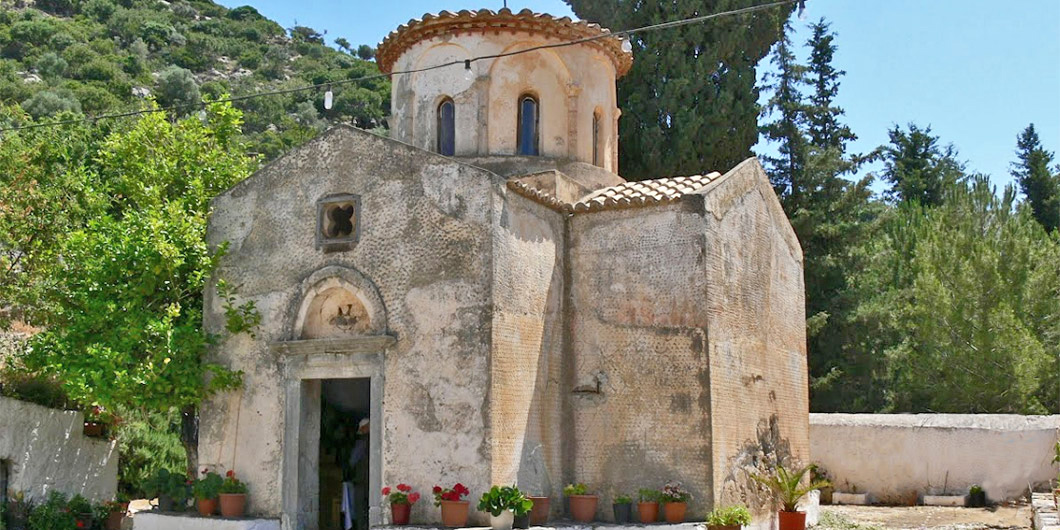The Monastery of the Virgin Gouverniotissa (Panagia Gouverniotissa) which isdeserted today, is located a little before the village of Potamies, on a slope thick with cypresses, olive trees and carob trees. When exactly it was founded is not known. However, judging by the numerous frescoes in the main church, it seems that the monastery existed in the 14th century.

These frescoes of the Palaeologan period (mid 14th century) are exquisite, and due to them Gouverniotissa is counted among the most important Byzantine monuments of Crete.
The main, restored church of Gouverniotissa is cruciform with a dome. The austere, awe-inspiring figure of the Almighty, which dominates the inside of the dome, stands out among the frescoes. The vivid-coloured form of Saint Barbara, on the western side of the church, is also impressive. Depictions of scenes from the life of Christ and Virgin Mary can be seen in other parts of the church, such as the Birth of Jesus, the Dream of Joseph, the Resurrection of Lazarus, the Entry into Jerusalem, the Betrayal of Judas, the Denial of Peter, the Crucifixion, scenes from the Miracles of Jesus, as well as other, rather unusual representations of his life.
These wonderful frescoes present stylistic innovations, indicating the influence of theartistic styles of the time, which were most likely received by the Palaeologan Byzantine art; they are characterised by a certain amount of realism and a vivid, narrative representation of the scenes. These innovations link the frescoes of the monument to the Macedonian School of Iconography.
Several remarkable icons that were also found in the church can be seen today in the Historical Museum of Crete.




